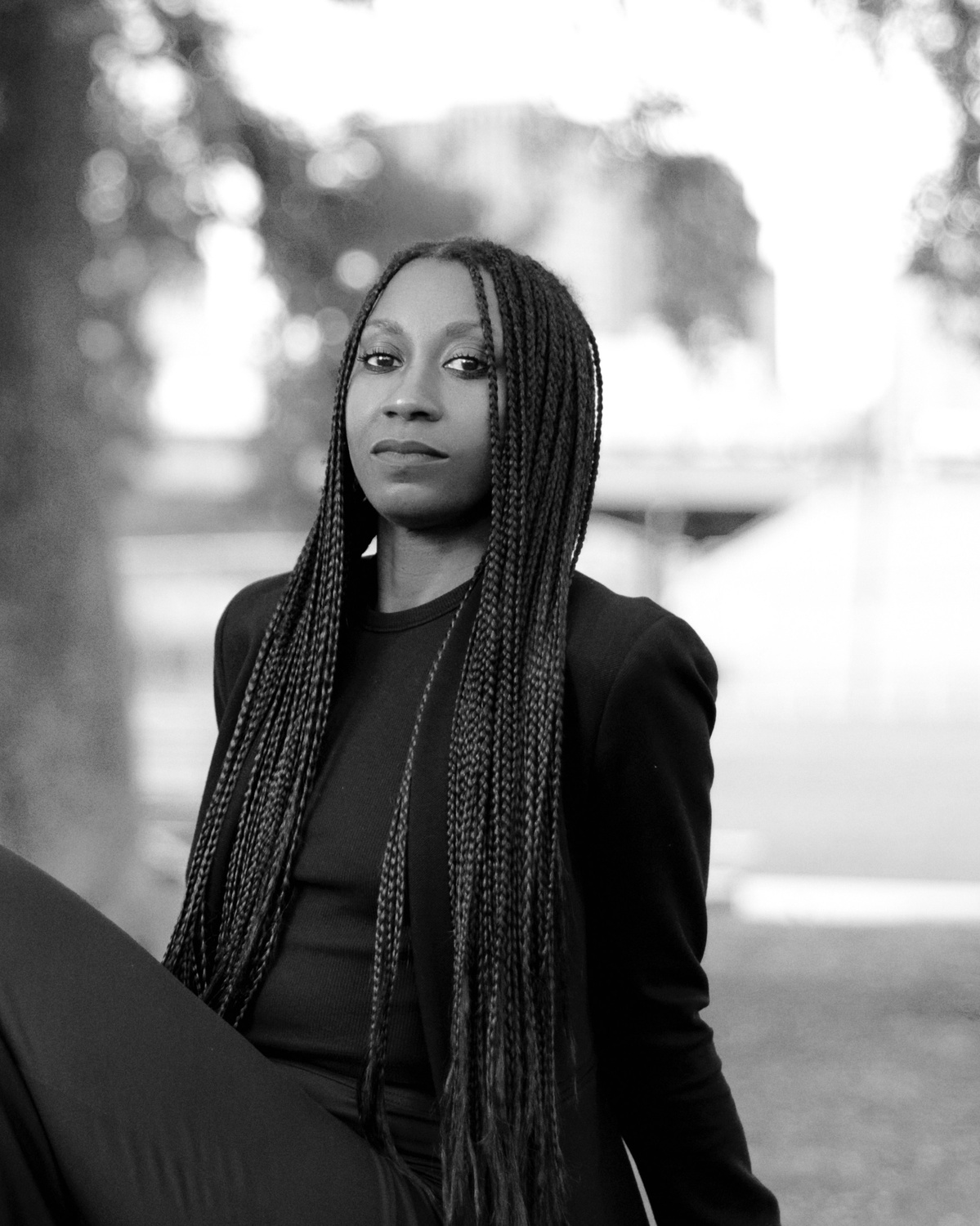
News
Summers Will Not Finish Semester of Teaching as Harvard Investigates Epstein Ties

News
Harvard College Students Report Favoring Divestment from Israel in HUA Survey

News
‘He Should Resign’: Harvard Undergrads Take Hard Line Against Summers Over Epstein Scandal

News
Harvard To Launch New Investigation Into Epstein’s Ties to Summers, Other University Affiliates

News
Harvard Students To Vote on Divestment From Israel in Inaugural HUA Election Survey
Artist Profile: Shana M. griffin on the Harvard ArtLab, Black Feminism, and Social Change Through Art

Shana M. griffin dedicates herself to creating social and political change everyday, using art as a tool. The self-described “feminist activist, sociologist, abolitionist, artist, and geographer,” according to Harvard ArtLab, is the 2024-2025 Loeb/ArtLab Fellow and sees this research opportunity as a way to bring light to important political and social issues.
“Much of my artwork is directly tied to my activism and my research, so I see my art itself as one of my research methodologies,” griffin said in an interview with The Crimson.
At the ArtLab, griffin currently displays three different types of work that she categorized into sections: “Black Rivers,” “SOIL,” and “Untitled, Self-Emancipation & Fugitivity.”
For “Black Rivers,” griffin sculpted an array of waves meant to bring attention to the Transatlantic Slave Trade.
“Being able to work with the joint compound here — having a space to work with such large pieces — was really great,” griffin said.
In “Soil,” griffin displays jars of dirt and ground along with black-and-white photographs to highlight years of discrimination and slavery through physical geography and cartography. In the final part of the exhibit, called “Untitled, Self-Emancipation & Fugitivity,” griffin explores the experience of 228 women from New Orleans who escaped slavery during the Antebellum Period, utilizing texture, textiles, and silhouettes in order to illustrate the fragments and frayed edges of their stories. She used the Freedom on the Move database to learn about the experiences of these women in order to create sculptures of their heads.
“The ‘Untitled’ work is newer to me: being able to contemplate and imagine different visuals for expressing the experiences and lives of women and girls who I knew very little about — the archive offers very little details of their lives — to create head sculptures,” griffin said.
For griffin, art can prompt viewers to actively think beyond what today's news outlets or books say about politics, without confining them to reflections about the past.
“In politics for me, a Black feminist, visuality creates an opportunity as an intervention and also an opportunity for engagement. Using art in many forms affords us to move beyond just words, and affords us to move beyond just a political positioning, but learn how to bring people in, whether that’s through an installation, whether that’s through a painting or a photograph or even through a sculpture,” griffin said.
Being based in New Orleans, griffin places a focus on the city’s history through her project “DISPLACED,” a multimedia exhibition that examines the vast amount of racism and inequality that evolved as the city developed. griffin co-founded a women’s health clinic in New Orleans after Hurricane Katrina, where she quickly began to look at the relationship between population control, surveillance, and U.S. social policies. She particularly thought about the ties between the regulation of women of color and their bodies. “DISPLACED” places a focus on how housing policies developed and contributed to the gentrification of the community.
griffin not only creates art, but is also interested in displaying other artists’ work. Although she doesn’t identify as a curator, her curatorial practice focuses on centering the artists, their work, and the communities that they come from.
“Art can open opportunity for us to be able to engage and think differently, and so, because much of my work is tied to challenging different forms of violence, I see that when I’m thinking about art and curation. In a way, curatorial practices sometimes can invisiblize the artists who are creating work, which becomes a form of violence,” griffin said.
griffin also founded the initiative “PUNCTUATE,” which combines research and art to detail the experiences of Black women.
“I feel like ‘PUNCTUATE’ is like a vision. It’s an intervention. It’s a way of existing in a world and thinking about how to create and be part of an undivided movement, while also being very rigorous in the research and also thinking deeply about how to research [and] lend yourself to organizing projects,” griffin said.
For her artwork, griffin finds inspiration from many different historical figures, especially finding direction from Black feminism. She cited Patricia Hill, Harriet Tubman, and Ida B. Wells as inspirations, listing many more and emphasizing that there were many other influential Black feminists that she might not be aware of.
griffin also discussed how her art is also influenced by violence against marginalized communities.
“My work is also inspired by, unfortunately, it’s weird, but inspired by violence — the violence that has been perpetrated against communities and Indigenous tribes and nations. That violence I feel like I’m inspired by, because the violence also created opportunities for resistance and possibilities,” griffin said.
For others who aim to make social and political change through artistic devices, griffin recommends a bold approach.
“Don’t give up, and don’t be afraid to research and to engage and learn and interrogate what you think you know, to learn a new way to learn differently. Creative risk taking — I [would] start there,” she said.
Want to keep up with breaking news? Subscribe to our email newsletter.
